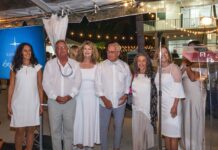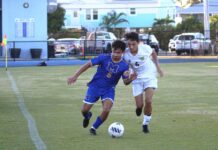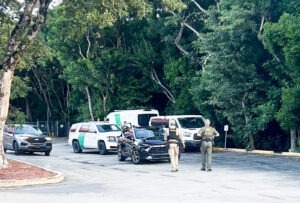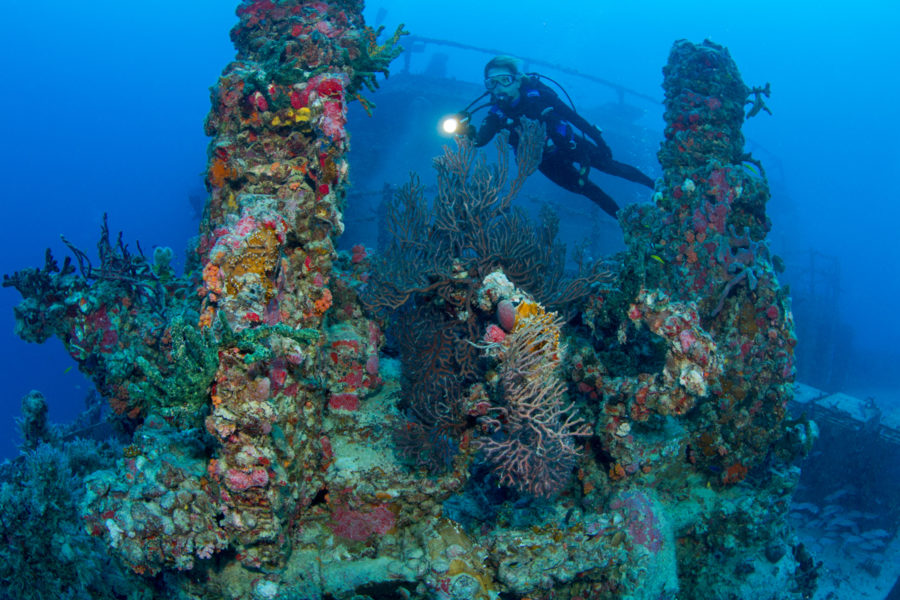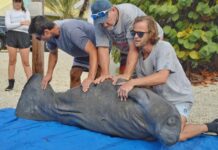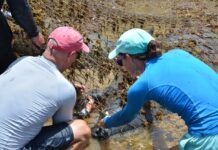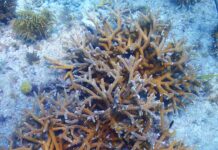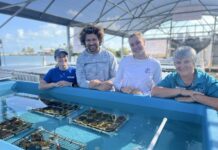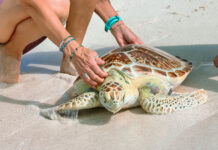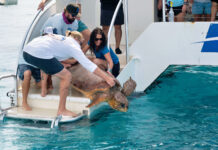
Stephen Frink is one of the most prolific underwater photographers in the world. In his latest lecture at the History of Diving Museum in Islamorada, the long-time Key Largo resident shared the good and bad he’s witnessed on our reefs over the last 45 years.
Frink opened the lecture talking of his long-time friend Jerry Greenberg, one of the true pioneers of underwater photography. Greenberg met Frink after the latter opened up a film processing shop in 1978 in the Upper Keys. Fast friends, Greenberg urged Frink to witness the beautiful elkhorn and staghorn corals at South Carysfort. He was in awe.
Then, “I went up, maybe around ’84, and much of that coral was gone,” Frink said. “That was a very profound epiphany for me — it can go that fast. We think we should look at the world with a geological frame of mind, but we’ve seen glaciers shrink in our lifetimes. We’ve seen corals go away. And, it’s astonishing to me how quickly things we take for granted can disappear.”
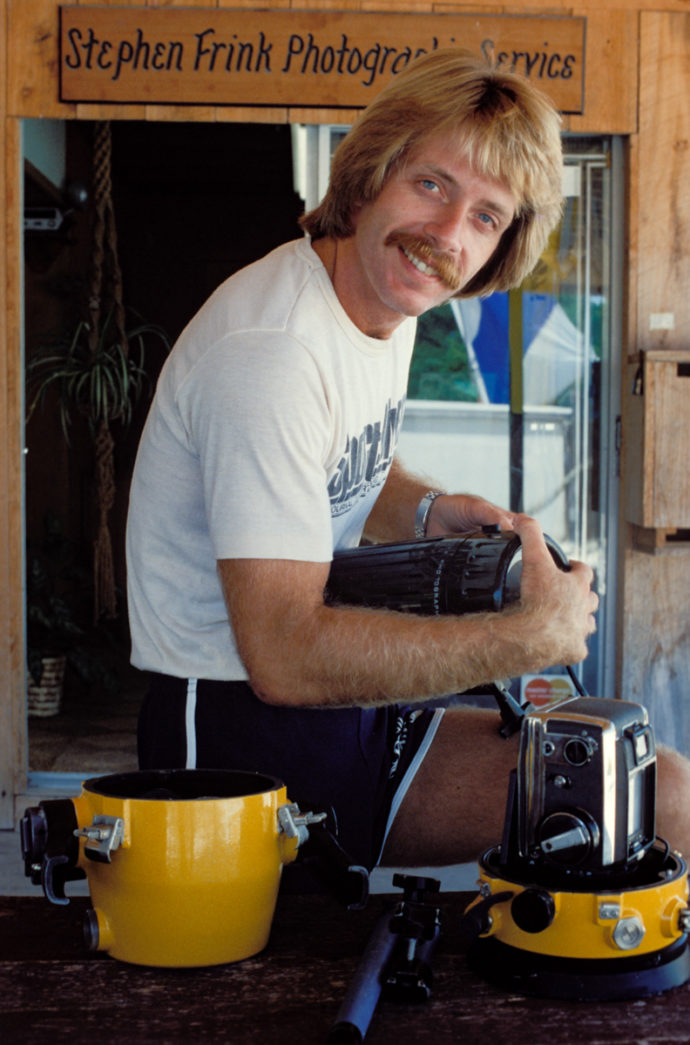
Famed underwater photographer Stephen Frink moved to Key Largo in 1978 to open a camera shop. STEPHEN FRINK ARCHIVE/Contributed 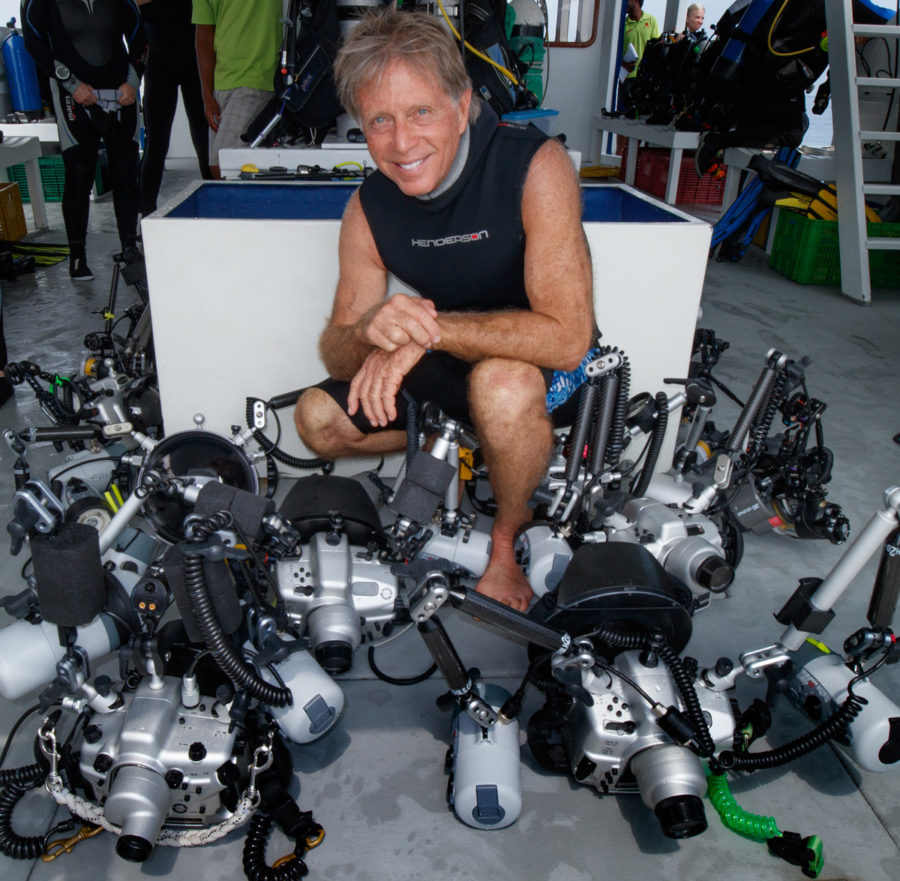
Stephen Frink is a Key Largo resident known around the world for his underwater photography. STEPHEN FRINK ARCHIVE/Contributed
Still, the veteran diver was quick to emphasize that not everything is doom and gloom. These changes are all part of the “dynamic that is our coral reef,” he said. Baselines shift, he acknowledged. Over his 43 years diving these waters, he’s also seen things come back. Much of that progress is thanks to locals who care, who are still working to save the reef.
Frink offered the mooring buoy program as an example. The concept of a mooring buoy, to prevent anchoring on coral beds on highly-trafficked reefs, was invented in the Keys. Popularized in the 1980s, the system is now used around the world.
He also applauded the reef restoration work being done throughout the Keys and around the world. It started with Frink’s friend Ken Niedermeier, one of the pioneers of coral restoration and the founder of the Coral Restoration Foundation, Frink said.
Finally, Frink talked about our marquee shipwrecks. Wrecks become paradise for fish and divers, and the plethora of sunken ships in the Keys has made us famous.
“What these ships do for a living, once they’re on the bottom, is hold marine life,” he said. “They get a lot of sponge encrustation and they become habitats.”
From the Vandenberg in Key West up to the Duane and Bibb in the Upper Keys, the wrecks provide critical habitat for marine life and wonderful dive opportunities for our locals and tourists.
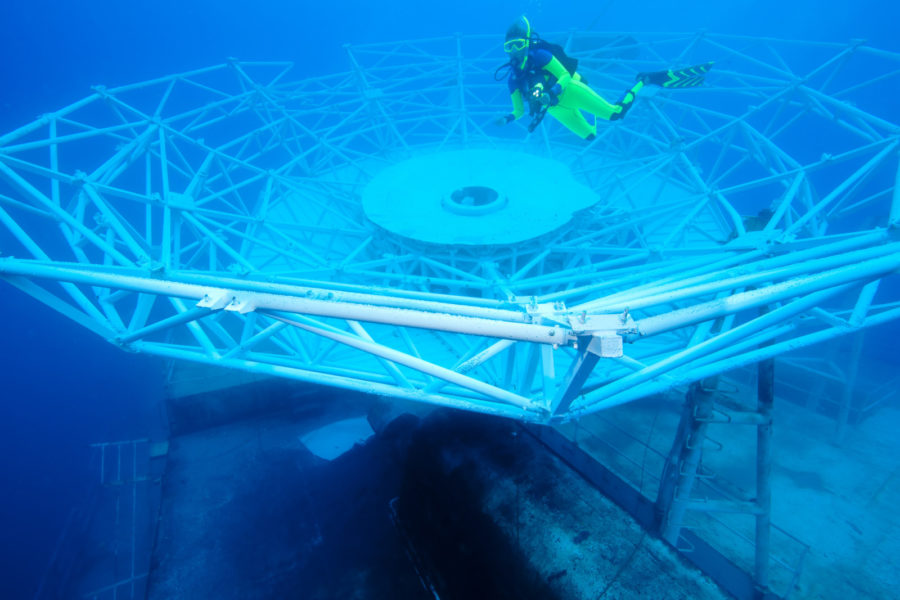
“The wrecks we have are truly a big asset to the Florida Keys dive portfolio,” Frink said. “In my mind, the Duane is the best wreck dive in the Atlantic and the Caribbean.”
Frink ended with the infamous story of the Spiegel Grove. He recounted how the local dive community sold dive medallions to raise enough money to procure and sink the ship. They succeeded, but then “the worst day in any of our dive lives happened,” he said. “She turned turtle and sank with air in the bow. The Coast Guard said, ‘You don’t have a shipwreck. You have a hazard to navigation, and we will blow it up if you don’t get it sunk.’”
For those who don’t remember, the Spiegel stayed floating upside-down at the surface until organizers (including Frink) were able to turn her to the side. She sank that way and stayed like that for three years, until Hurricane Dennis righted her underwater.
“Now, she’s a world-class wreck dive. I can’t even calculate the contributions she’s made to our dive community in dollars and cents. She also holds a lot of fish,” Frink said.
He summed up: “That’s what shipwrecks have done for us. That’s what our locals have done.”
To end, Frink showed an image of a little turtle, the first shot he took post-Irma. For days, he’d dreaded the destruction he might see, but this turtle showed up.
“To me, the little turtle was saying, ‘Hang in there, buddy. It’s still good,’” Frink said.
That turtle helped Frink realize that “it’s all shifting baselines” and that conditions might not return to what Jerry Greenberg saw in 1957 or even what he himself saw in 1978, but that “it’s pretty cool still.” He concluded with an invitation to all to “Come jump in and enjoy” all our waters have to offer.








